How to maintain hardwood floors
17/10/19 15:47
First things first, starting from outside! One of the basic and most effective things you can do to prolong the new look Read More…
Can I sand and refinishid engineered hardwood flooring?
04/10/19 09:51
If you have ever been looking to install new hardwood floors in your house or refinish existing one, chances are you have heard about engineered floors and if they are sandable. In order to answer this question we need to start knowing the differences between solid and engineered hardwood floor products. We have talked about this topic briefly here Solid and Engineered flooring. 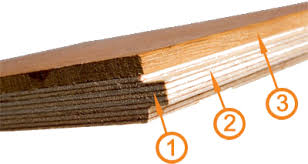
What is engineered hardwood flooring?
If we want to summarize the answer; in short, engineered wood floor is a wooden flooring product made out of gluing veneers of wood. This alone explains it’s essential difference with a solid wood product and also explains why it’s usually not sandable. If you look at the picture above, you can see the layers of veneers that are building this board. Each layer of veneer is glued at 90 degree angle above next layer. This will add dimensional stability to the the structure making it suitable for installing over a concrete floor for example. As you see in the picture bottom layers like 1 and 2 are the backing while the top veneer 3 is the actual surface that you’ll step over and that is the one determining the color, grain, and name of that specific floor. If the top veneer is oak, you have an oak engineered wood and so on. In most cases the top layer in a thin film and not thick enough for sanding process. In order to refinish a wood floor, there will be several passes of sand paper starting from rough to fine over the surface of the wood which removes material and “eats” into wood. Most of the times the veneer on the top layer will be all gone if you attempt to sand this type of floor. What remains would be the bottom layer exposed which is very different. There are on the other hand some small percentage of engineered wood products that have a decent layer of veneer installed on top, say about 3mm.Solid wood on the contrary as the name explains is a solid board milled from tree trunk. There is no secondary construction added to it. It’s thicker and has more wooden stock on top. This leaves enough “meat” on the top surface above where tongue and grooving is for sanding process, usually about 4-5 times.
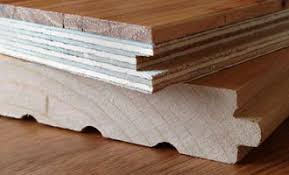
Some information about sub flooring
22/07/19 22:06
Common Sub-Flooring Damage
One of the areas of leakage concern is around the toilets. Each toilet has a seal at their base which can crack allowing for water seepage into the floor around the toilet. Shower and bathtub areas are also well known to have leaks behind the faucets in the wall. If this occurs, water will often permeate the flooring and sub-flooring which causes rot and deterioration as well. This may go unnoticed in some instances but is often discovered quickly in second-floor bathrooms. If the leak goes unnoticed for because it is not readily visible or accessed, the damage can escalate.
One of the other most common areas that can show problems with sub-flooring rot is around the shower. If the shower curtain or door are not closed properly, water seepage onto the floor area is common. Over time, this saturation will affect the floor underneath. Failure to recognize the early signs of this can result in the need to replace both the flooring and the subflooring.
If a water leak is discovered in a sink, shower or toilet area, it should be repaired quickly. The repair may need to include a bathroom tile project if the water has seeped behind the tile and onto the flooring. If this occurs, the fixtures in these rooms should be replaced and upgraded to protect against significant damage. Repairs and replacement of any fixture should be completed at the first sign of leakage. In the case of a shower, water leaks from faucets may also affect the walls as well as the flooring.
For people who pose the question “why install new floor materials after a bathroom leak?”, the answer is simple, flooring materials that are weakened increase the likelihood that the sub-flooring will begin to deteriorate, rot and collapse.
When this occurs, the floor area will seem soft and will not have the same sturdiness as the rest of the floor area. Two of the biggest areas where this will appear is around the toilet or the shower.
Homeowners who are remodeling a bathroom or replacing out a toilet, often discover there is damage to sub-flooring. When this occurs, the area will likely require sub-flooring repair work. It is also not uncommon for flooring jobs in a bathroom to include shower remodeling and a bathroom tile project. This will include replacing wall tiles around a shower or sink after a leak. This is a smart investment that helps ensure the newly installed flooring will be less likely to be damaged from leaks in the near future.
Through timely upgrades to the bathroom fixtures such as shower remodeling, installing new toilets and vanities, homeowners can avoid potential damage to subflooring and walls from leaks. Upgrading bathroom fixtures before a problem becomes evident can save a homeowner significant amounts of money on repairs to structural subflooring and walls later.
In the kitchen, the two main areas where leaks can arise are the dishwasher and the sink. These areas should be monitored for potential water leaks as well. Like bathroom floor damage, new flooring should be installed in a kitchen if a leak is discovered that has permeated to the sub-flooring. All weakened sub-flooring should be replaced before any new flooring is installed. Failure to do this may cause collapsed sub-flooring and damage to the newer flooring materials.
Solid hardwood floor vs engineered floor
09/04/19 18:34
If you have ever been in the market to choose or buy a new flooring for your house you have most probably heard the terms “solid hardwood and engineered floor”. You might have wondered
The names are descriptive of the main difference between two. Solid wood is an all solid board milled from different species of trees, oak, cherry, maple, etc. No other processes - except for adjusting moisture content and cutting-has been performed to make this floor. As a result this type of floor is sandable.what is the difference or which is a better choice for your flooring project.
Engineered wood on the other hand is not one piece of wood made from certain wood. It’s mostly several plies of wood, 3, 5, 7 or more of backing-mostly made from poplar wood- and then the actual wood as a film on top. This top veneer is what makes the distinction between various engineered wood, like oak, maple, walnut, cherry, etc. Also this top veneer can come in difference thicknesses. Most of the times you can not sand an engineered floor since you only have a thin film or veneer to sand. But there are also some small fraction of this type of flooring with thicker veneer that will give the possibility of one time or maybe 2 time sanding.
Main application of solid wood flooring is stapling or nailing over a plywood subfloor. It’s not always possibly to use this type of floor over concrete. To do that there may be need for installation of plywood over concrete on use of specialized glue which prevents concrete moisture affecting solid wood floor. Engineered wood flooring can be installed over most any subfloor, however, it is ideal for over concrete installation as the normal moisture emission won’t affect it.
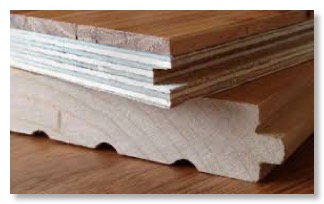
Is Luxury Vinyl Plank - LVP good for main floor installation?
28/03/19 21:19
With increasing popularity of LVP or LVT floors, this question is asked asked a lot about whether it’s a good option for main level of the house. Answer will depend on few aspects. Is someone looking for appreciated value in changing the flooring to LVP or practicality of a floor? are there plans to stay in the property for a long term? is this to be installed in a rental property or main residence?
, particularly for a rental property floor. If you are looking to sell the house. If you plan to sell your house, however, you might want to look into hardwood flooring type of material. They would have more value added to the sale of house. Check Roswell Flooring Services
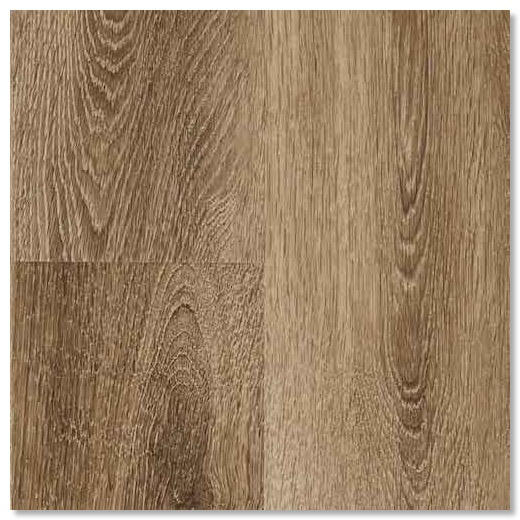
Luxury vinyl floors are durable and generally waterproof floors
. They do not scratch easy and are installed in floating method. Prices are fairly lower that wood floors.Considering these benefits luxury vinyl floors can be a very practical and affordable flooring option
, particularly for a rental property floor. If you are looking to sell the house. If you plan to sell your house, however, you might want to look into hardwood flooring type of material. They would have more value added to the sale of house. Check Roswell Flooring Services

What type of floor should I choose for basement?
17/03/19 20:55
This is a common question our customers ask all the time, “
But there are other types of floors that will be perfectly fine for this type of location use. In general except to solid wood flooring, there is no limitation to other types of floor products that you can use in basement floor. Laminate and carpet floors are popular floors. Luxury vinyl planks getting more attention these days. They look good, they are more affordable and more importantly there are also considered waterproof. They are usually harder than engineered wood floors and water spills or mopping won’t affect them.
Give us a call for a consultation and free estimate 770-906-4732
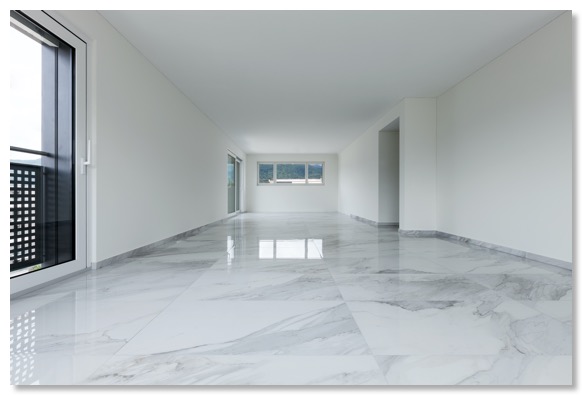
What type of flooring do you recommend to install in our basement floor?
” In order to find an appropriate flooring product for basements we must remember that almost oil basement are have slab subfloor. In many cases the are considered under level - meaning below ground level- or on level. This is important when you want to decide on what to install as a basement flooring. King of floors for basement is considered to be tile as it’s waterproof floor and it won’t be destroyed by possible water exposure or flooding. It’s still true. If you want a permanent floor that won’t be destroyed by flooding you might want to look at tile floors especially porcelain tiles.But there are other types of floors that will be perfectly fine for this type of location use. In general except to solid wood flooring, there is no limitation to other types of floor products that you can use in basement floor. Laminate and carpet floors are popular floors. Luxury vinyl planks getting more attention these days. They look good, they are more affordable and more importantly there are also considered waterproof. They are usually harder than engineered wood floors and water spills or mopping won’t affect them.
Give us a call for a consultation and free estimate 770-906-4732